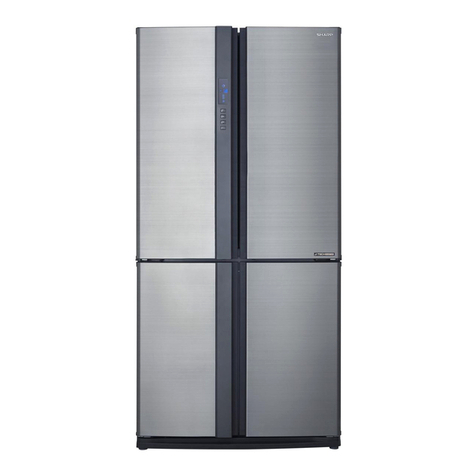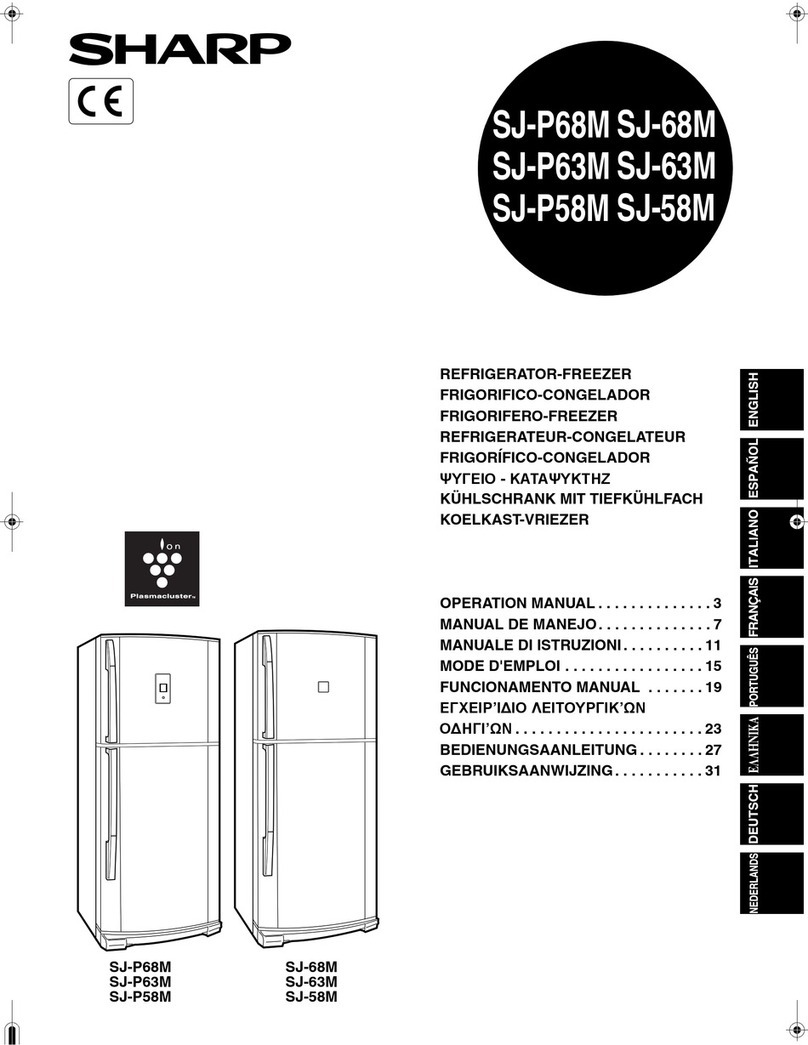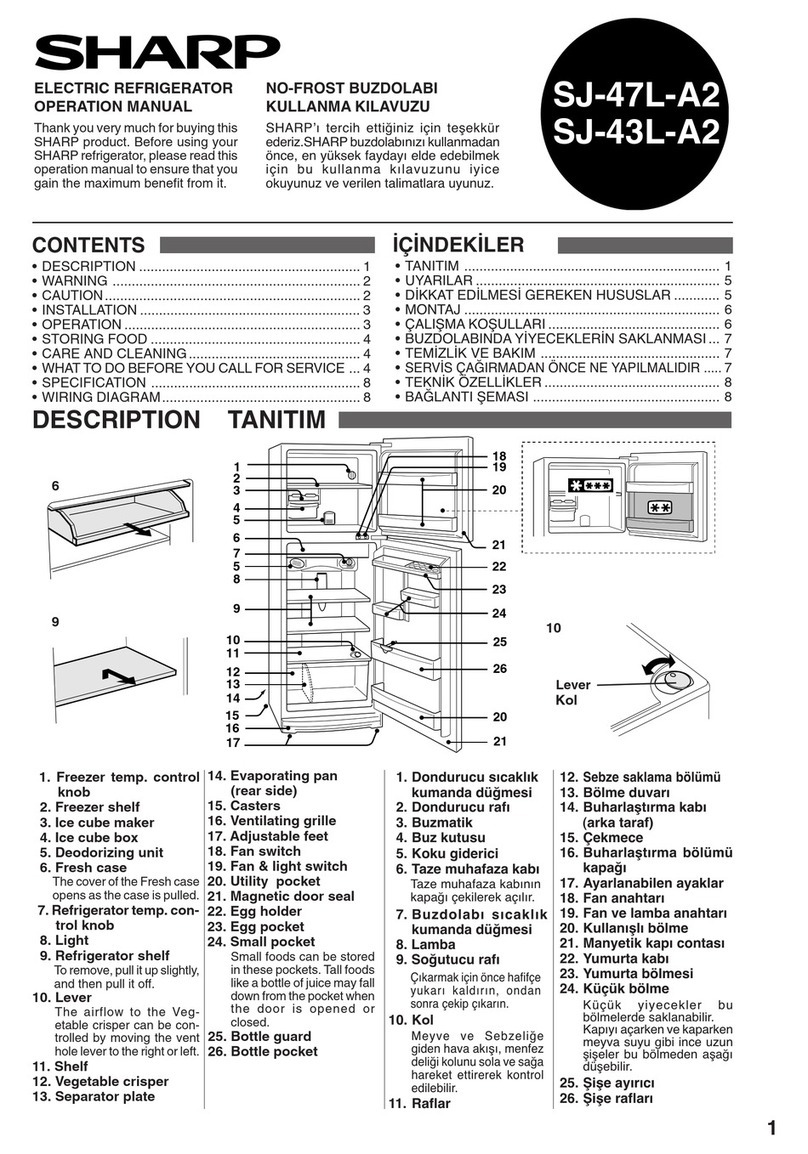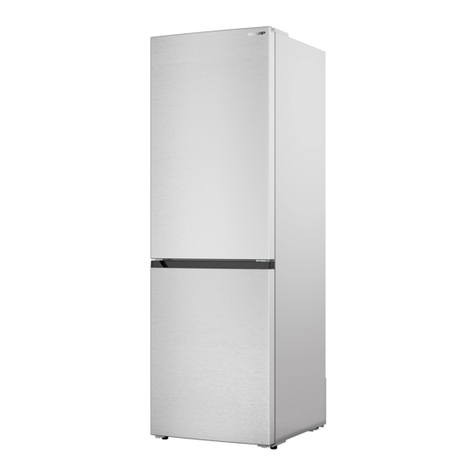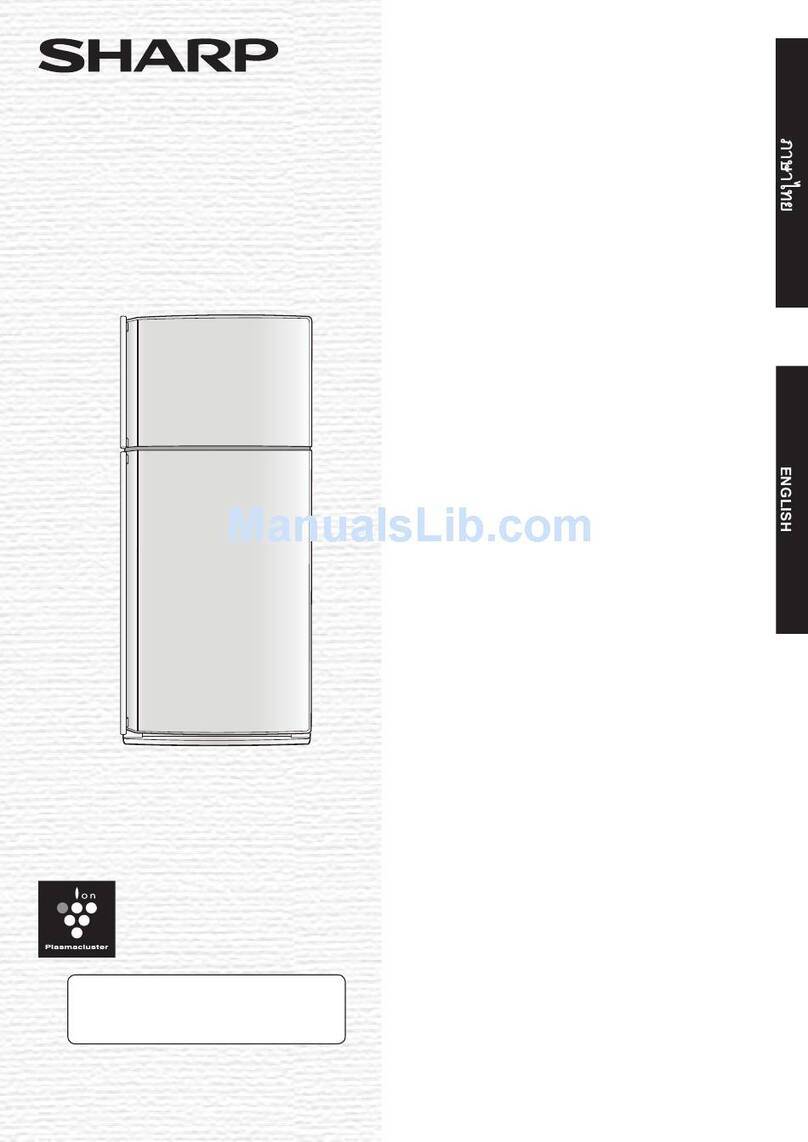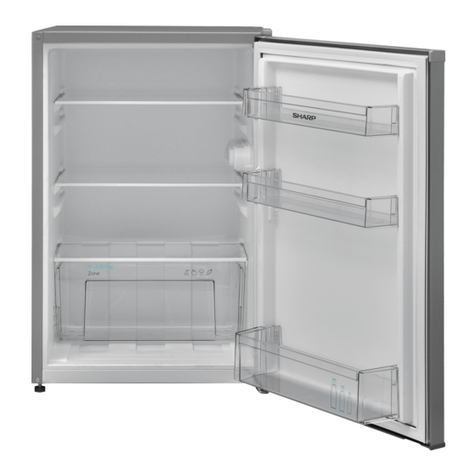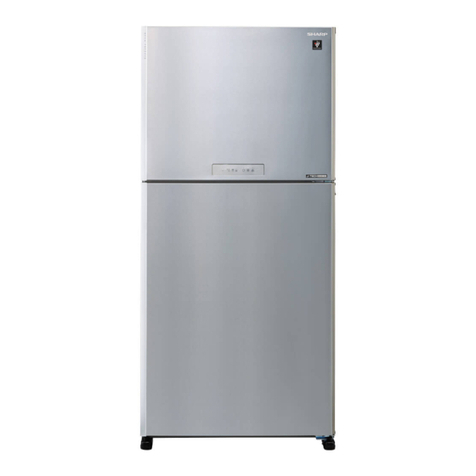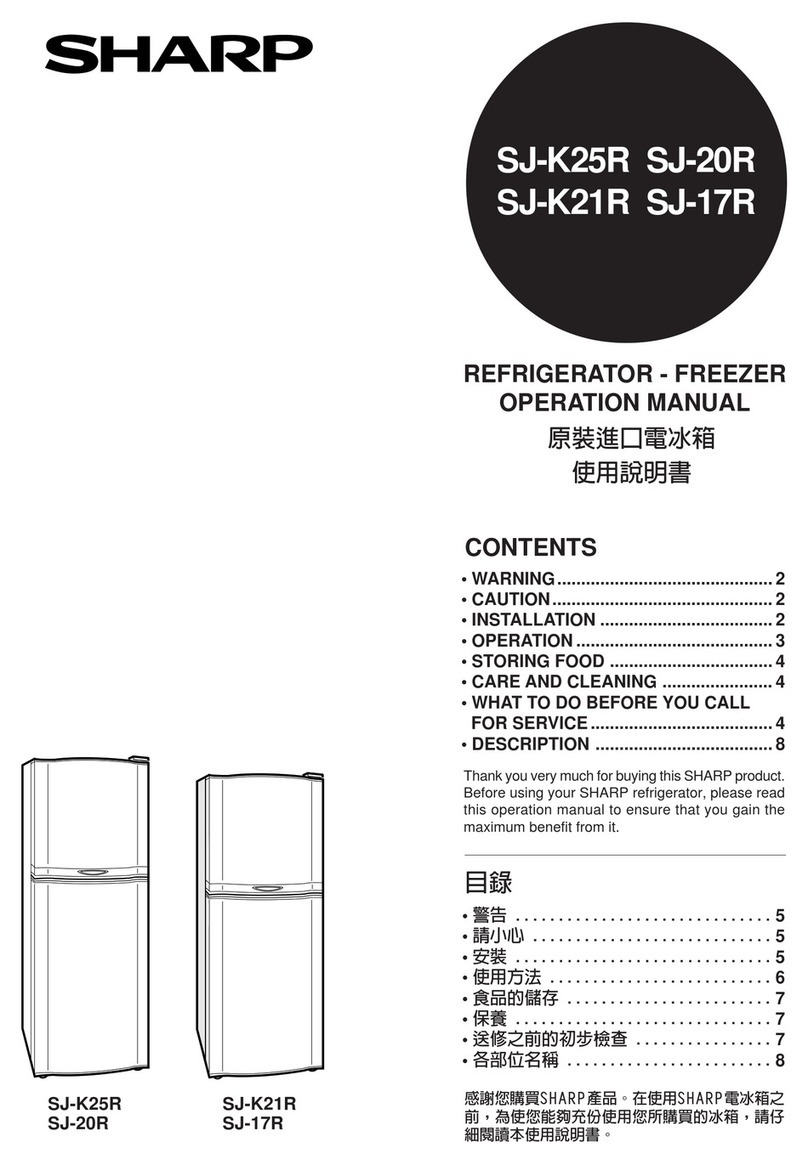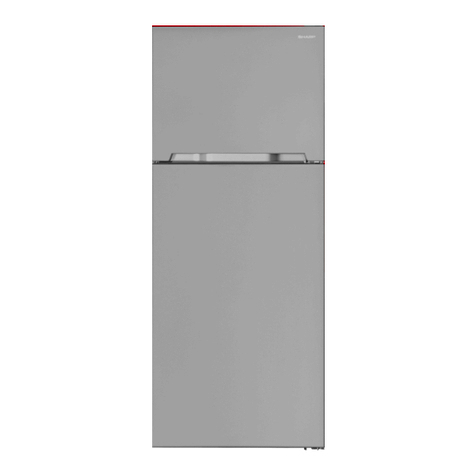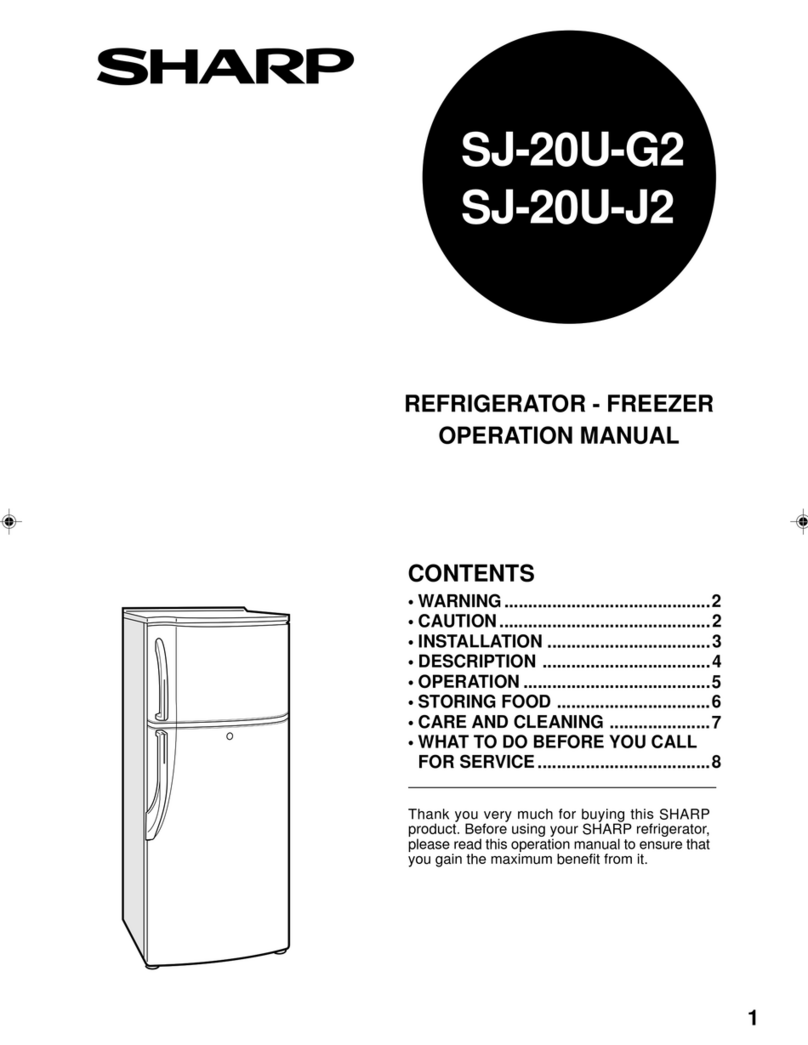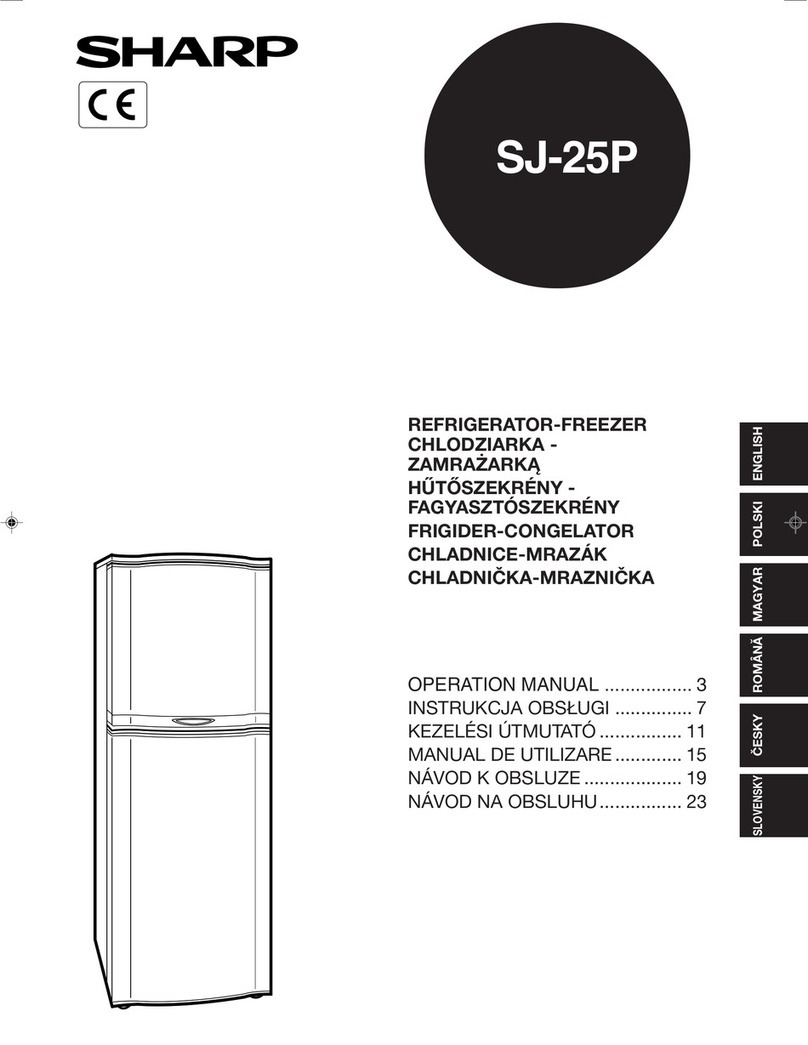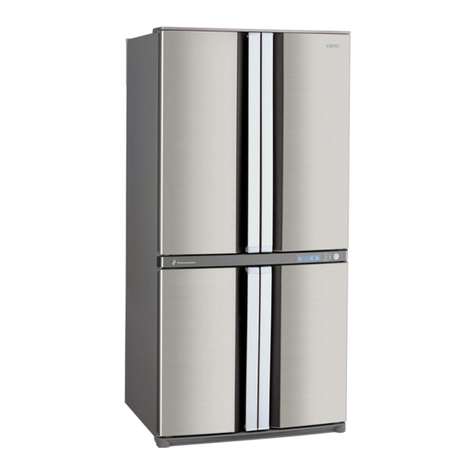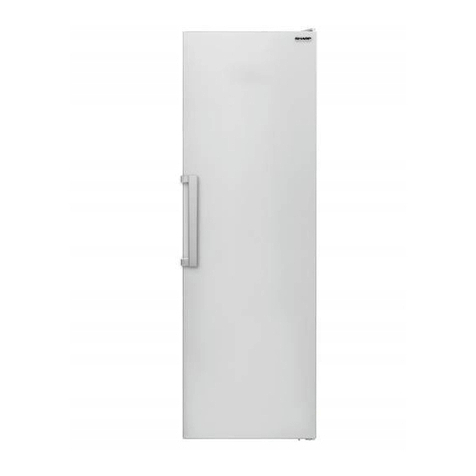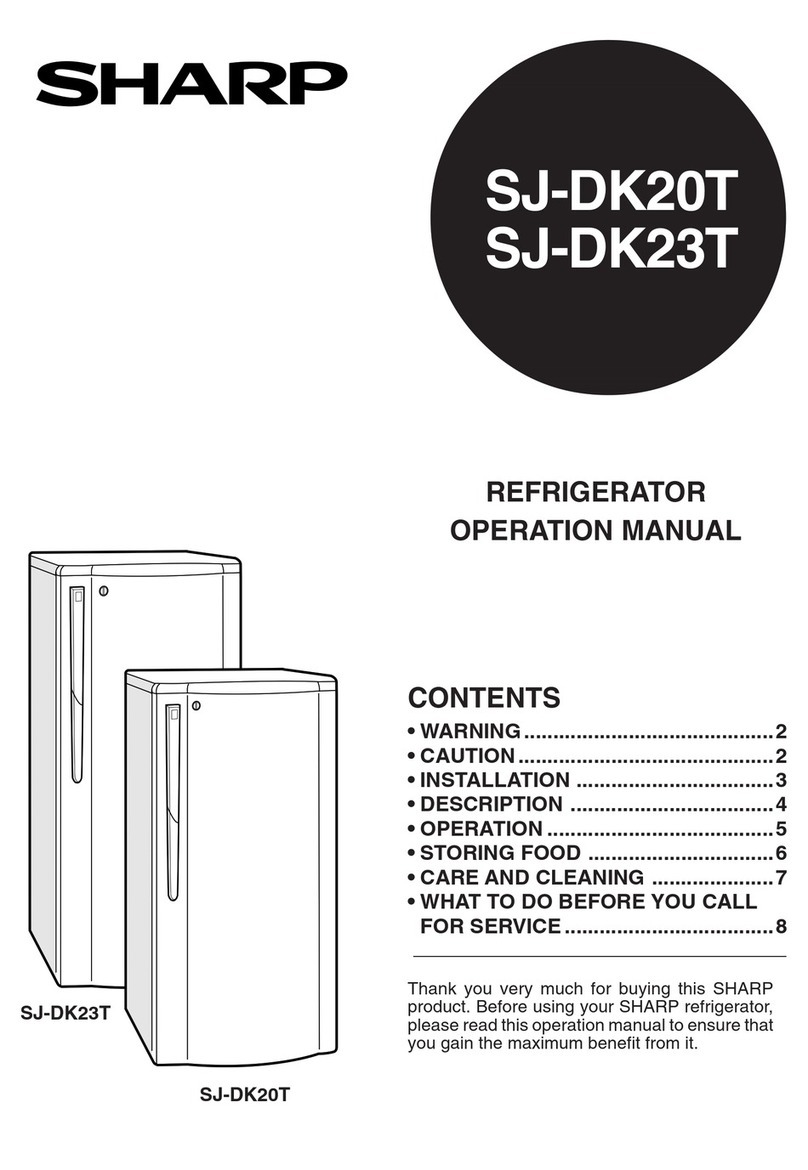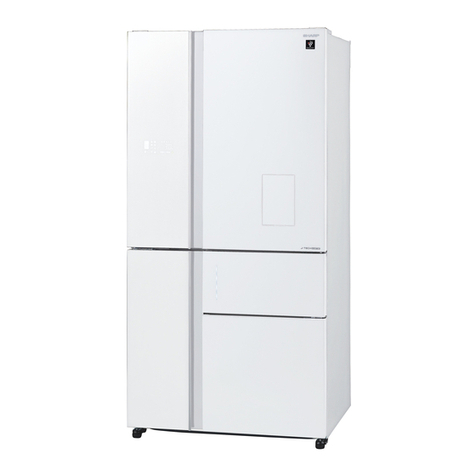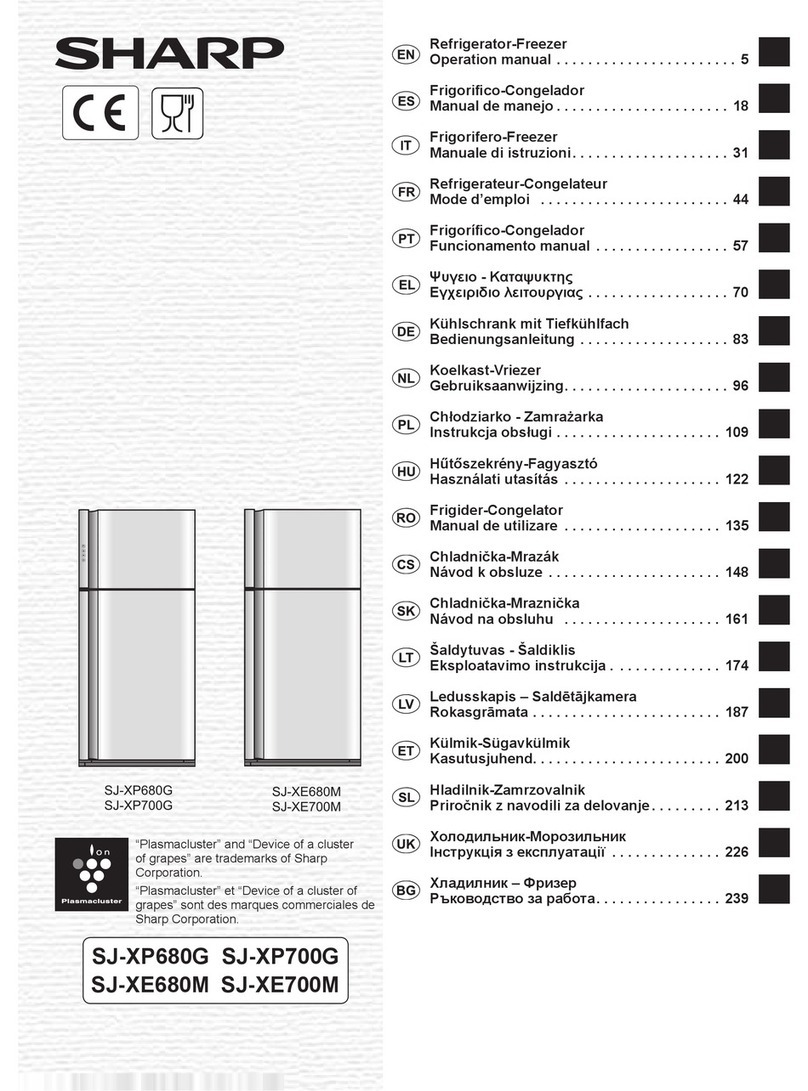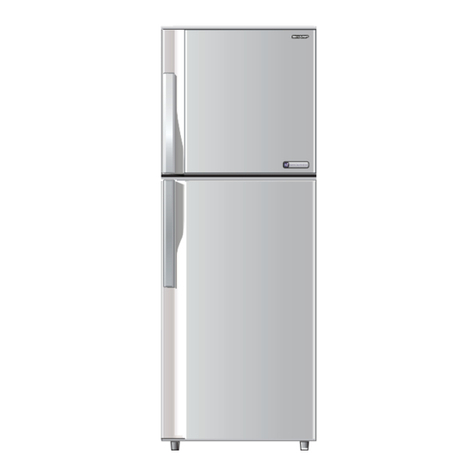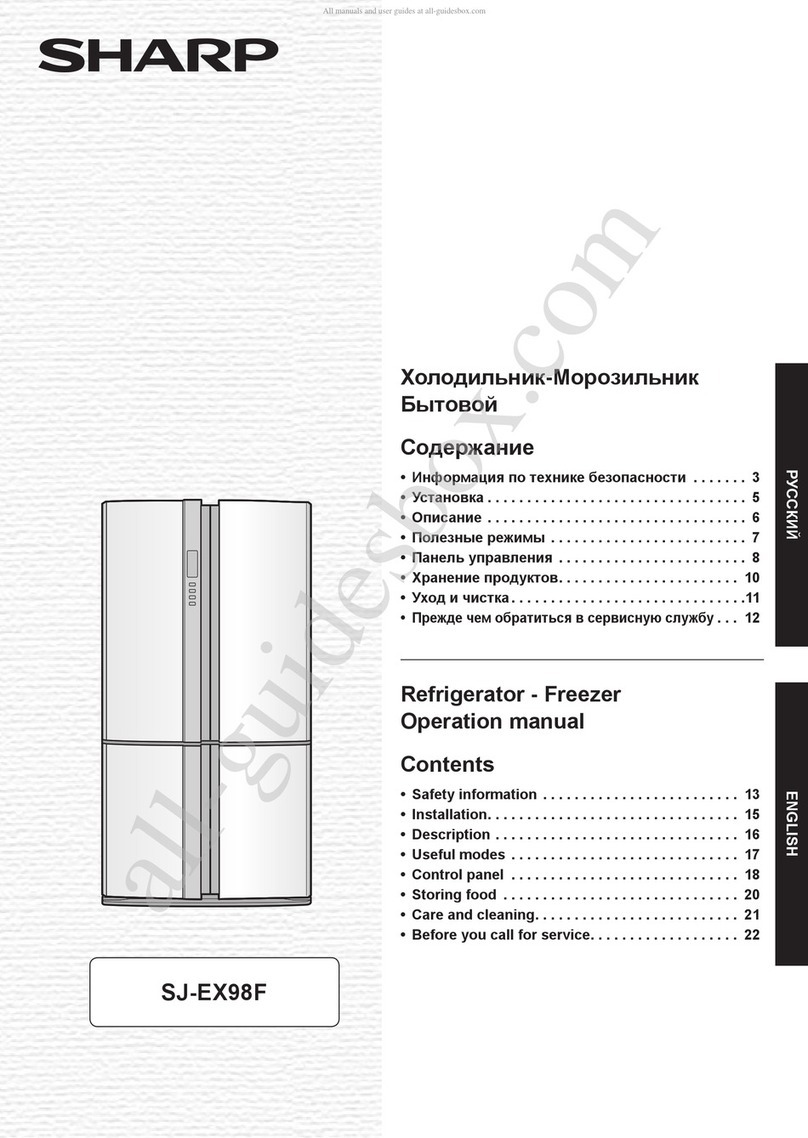
EN -8-
CHAPTER -3: USING YOUR FRIDGE FREEZER
The values on the screen indicate the temperature selected by the user.
The standby display is protected against faulty contact. You must touch any key on the display before making
an action. After 2 seconds, a beep will sound and the display can be used. Wait 20 seconds at the end of the
process and the display will return to Standby mode.
Operating Your Fridge Freezer
Beverage Cooling (QDRINK)
Press the 'q.drink' button to activate drink cool mode. Each press will increase the time by 5 minutes, up to a maximum
of 30 minutes, after which it will return to zero. You can view the time on the "Qdrink alarm timer" section. An alarm will
sound when the mode is complete.
Important: Drink cool mode should not be confused with cooling.
Adjust the time according to the temperature of the bottles before you put them in the zone 1 and/or zone 2
compartments. For example, the time may initially be set for 5 minutes. If your drinks have not cooled sufciently
after this time, you may set a further 5 or 10 minutes cooling time. While this mode is active, you must check the
temperature of the bottles regularly. When the bottles are cool enough, they must be removed from the appliance
otherwise they may burst or explode.
Economy Mode (eco)
Economy mode ensures that your refrigerator operates at the most efcient temperature. To activate 'ECO' mode,
press the 'mode' button until the 'eco' symbol and 'e' illuminate.
Holiday Mode (H)
Holiday mode is represented by a symbol of an umbrella and the sun. If the cooler compartment will not be used for
some time, such as during a holiday, activate holiday mode. To activate holiday mode, press the mode button until the
holiday mode symbol and 'H' illuminate.
Quick-Freezing (SF, SUPER FREEZE)
Press the 'zone1' or 'zone2' button until 'SF' shows on the electronic display. If no button is pressed while 'SF' is
displayed, a beep will sound to conrm the mode is active. This mode can be used to freeze prepared meals or freeze
large amounts of food quickly. Quick-freezing mode will automatically deactivate after 24 hours or once the freezer
compartment temperature sensor reaches the correct temperature.
For quick-freezing, select the zone 1 compartment.
Quick-Cooling (SC, SUPER-COOL)
Press the cooler button until 'SC' shows on the electronic display. If no button is pressed while 'SC' is displayed, a
beep will sound to conrm the mode is active. You can use this mode to cool prepared meals or large amounts of food
quickly. Quick-cooling mode will automatically deactivate after 4 to 6 hours, depending on the ambient temperature, or
when the cooler compartment reaches a sufciently low temperature.
Cooler (COOLER)
The cooler mode is used for setting the temperature of the cooler compartment. Press the cooler button to set the
temperature to 2, 3, 4, 5, 6, 7 or 8 °C.
Freezer / Cooler 1 (ZONE 1)
To use the zone 1 compartment as a freezer, press the 'zone1' button to set the temperature of the bottom-left
compartment to -16, -17, -18, -19, -20, -21, -22, -23 or -24 °C.
To use the bottom-left compartment as a cooler, press and hold the 'zone1' button for 3 seconds. Then, set the
temperature to 2, 3, 4, 5, 6, 7 or 8 °C.
Freezer (ZONE 2)
Press the 'zone2' button to set the temperature of the bottom-left compartment to -16, -17, -18, -19, -20, -21, -22, -23
or -24 °C.
Child Lock (Key Symbol)
To activate the child lock, press and hold the cooler and 'zone2' buttons simultaneously for 3 seconds. The child lock
prevents changes from being made to the settings as the buttons will be deactivated. To deactivate the child lock, press
and hold the cooler and 'zone2' buttons simultaneously for 3 seconds.
Screensaver (s.saver)
This function saves energy by switching the lights on the electronic display panel off. To activate the screensaver,
press and hold the 's.saver' button for 3 seconds. To deactivate the screensaver, press and hold the 's.saver' button
for 3 seconds.
Night Sensor
This night sensor function saves energy by switching the lights inside the refrigerator off if there is sufcient illumination
in the room. To activate this function, press and hold the mode and 's.saver' buttons for 3 seconds.
Demo Mode
This mode is reserved for service and is not related to the use of refrigerator.
